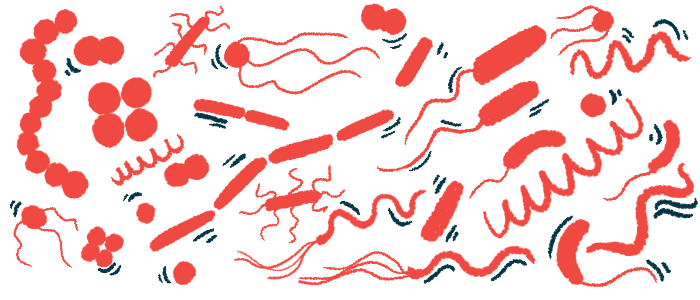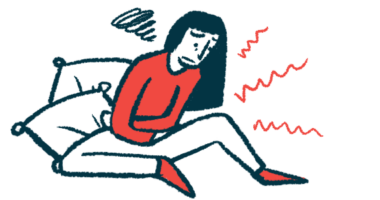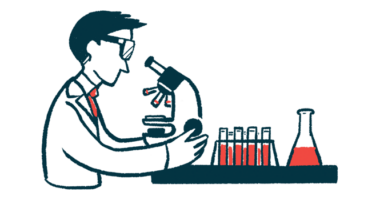Infection rates lower with Enspryng over other immunosuppressives
Researchers gathered data from a large NMOSD population to assess risk

Infection rates were consistently lower in adults with neuromyelitis optica spectrum disorder (NMSOD) treated with Enspryng (satralizumab-mwge) over other immunosuppressive therapies, according to long-term data from clinical trials and real-world settings.
“This analysis provides reassurance that the [Enspryng] safety profile observed in patients with NMOSD in a clinical trial setting is consistent in a real-world setting and reflects a representative sample of the patient population,” the research team wrote. The study, “Analysis of infection rates in neuromyelitis optica spectrum disorder: Comparing satralizumab treatment in SAkuraMoon, post-marketing, and US-based health claims data,” was published in Multiple Sclerosis and Related Disorders.
NMOSD is an autoimmune disease that primarily affects the spinal cord and optic nerve, which relays signals between the eye and the brain. Inflammatory episodes typically occur periodically, with relapses separated by periods of remission. Most cases are associated with self-reactive antibodies against aquaporin-4 (AQP4), a protein on cells that support the nervous system.
Developed by Chugai Pharmaceutical, a member of the Roche group, Enspryng is approved for adults with NMOSD who test positive for anti-AQP4 antibodies. It reduces the risk of relapse by blocking the receptor for interleukin-6, a pro-inflammatory signaling protein that drives the disease’s attacks.
Because they suppresses immune responses, using immunotherapies like Enspryng over the long term may increase the risk of infections and lead to serious complications and/or aggravate the underlying neurological condition.
Evaluating infection risk with Enspryng
“Minimizing the risk of infection associated with therapies, as well as the [illness] and mortality associated with the infection itself, is one of the key considerations for prescribers,” wrote the researchers, who gathered data from a large population of NMOSD patients to assess infection risk with long-term Enspryng. The study was sponsored by Roche.
First, data were collected from the SAkura studies — two placebo-controlled Phase 3 clinical trials, SAkuraSky (NCT02028884) and SAkuraStar (NCT02073279), and their open-label extension (OLE), SAkuraMoon (NCT04660539). This analysis included 166 patients who received at least one dose of Enspryng. The median treatment period was 5.9 years, with some patients treated for nearly nine years.
During the placebo-controlled trials, the incidence of infection and serious infection was lower with Enspryng than a placebo. According to the researchers, the “incidence of infection and serious infection did not increase with longer exposure to satralizumab.” Across all the studies, the most common serious infections were urinary tract infections (3.0%), lower respiratory tract infections (4.2%), and sepsis (2.4%), a life-threatening condition caused by the body’s extreme response to an infection.
The incidence of serious infection was higher in those with more disability, as indicated by a score of at least 4 on the Expanded Disability Status Scale (EDSS), before starting Enspryng, than in those with less disability, with a score of less than 4 (17.3% vs. 5.6%). Similar results were observed for sepsis. Still, about half the patients with serious infections had stable scores over the follow-up.
The second dataset analyzed real-world Enspryng post-marketing experience based on NMOSD patients from Periodic Benefit-Risk Evaluation Reports (PBRERs), which are regular reports about the safety and effectiveness of a medicine after it’s been approved and is in use. Each PBRER described infections in six-month intervals, along with the total exposure since Enspryng’s approval.
With up to three years of data, 7.3% of the 2,951 Enspryng-treated patients had an infection, and 3.8% had a serious infection. At every six-month interval, the reported rates for both were consistently below 5.5%. Serious infection rates were higher in patients older than 65 and, consistent with the SAkura studies, the most common serious infections were urinary tract and lower respiratory tract infections, and sepsis.
Comparing risk with Enspryng, other immunosuppressives
In the third analysis, the data were based on real-world U.S. health claims from the PharMetrics claims database, with a follow-up of four years. More than 99% of these patients didn’t receive Enspryng, but were instead treated with other immunosuppressive therapies, including oral corticosteroids, rituximab, and intravenous methylprednisolone.
Here, the incidence of infection and serious infection was 67.3% and 8.4%, respectively, remained consistently high for both, and increased over time. Again, the most common serious infections were lower respiratory tract and urinary tract infections, and sepsis.
Lastly, the researchers assessed infection patterns in real-world settings by comparing the post-marketing data to health claims data. Over three years, the cumulative incidence of infection was consistently lower in the Enspryng post-marketing data over the health claims data (7.3% vs. 60.5%). Similar results were seen for serious infections (3.8% vs. 7.9%), the most being urinary tract and lower respiratory tract infections, and sepsis. Other frequent serious infections in the claims dataset were gastrointestinal infections, pneumonia, and skin infections.
Both real-world datasets had limited information on factors that may influence the results, including age, ethnicity, NMOSD diagnostic criteria, antibody test results, EDSS scores, the use and duration of other medications, and the outcomes of serious infections.
“Infection is a major comorbidity in NMOSD, independent of [Enspryng] treatment,” the researchers wrote. “[Enspryng] may be a favorable long-term treatment option to minimize disease burden in patients with [anti-AQP4-positive] NMOSD.”







